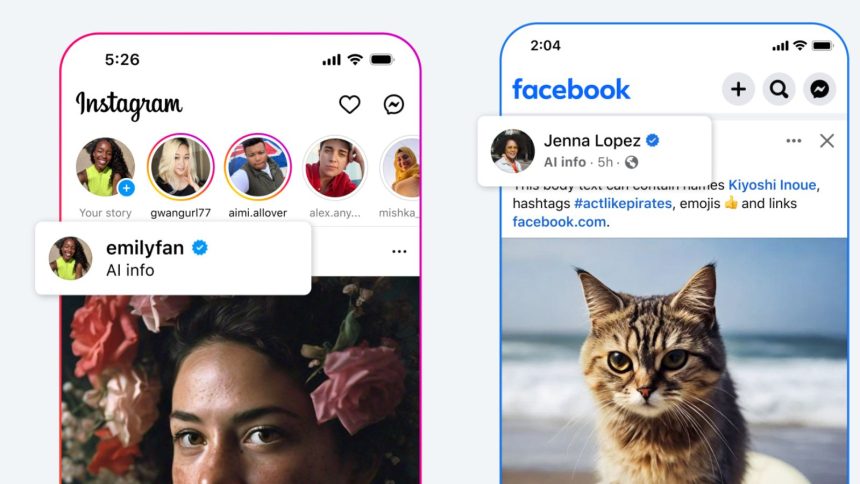Meta, the company behind Facebook, Instagram, and Threads, is making changes to new “AI Info” they handle AI-generated content and manipulated media on their platforms. These updates aim to increase transparency for users and address concerns about the accuracy of AI detection.
From “Made with AI” to “AI Info”
Previously, Meta used a “Made with AI” label to identify content created or edited with AI tools. However, this label was criticized for being misleading, as it sometimes flagged content with minimal AI involvement. To address this, Meta is transitioning to a new “AI Info” label.
This new label will provide more context when clicked. It will clarify that even minor AI edits, such as using retouching tools, can trigger the label. Meta will continue to use technical standards to detect AI usage, meaning tools like Adobe’s Generative AI Fill may still result in the “AI Info” label. The goal is to inform users that AI may have played a role, but not necessarily in creating the entire image.
Handling Manipulated Media
Meta is also revising its approach to manipulated media. They will now use the “AI Info” label for a wider range of AI-generated content, including videos, audio, and images. This aims to increase transparency and context without overly restricting users’
For content deemed highly deceptive, Meta will apply stronger labels but will generally keep the content on the platform, unless it violates their Community Standards on issues like voter interference or violence.
Focus on Transparency and Collaboration
In July, Meta will temporarily stop removing content solely based on their manipulated media policy. This is to give users time to adjust to the new labeling system. Additionally, Meta plans to work with other companies to establish common standards for identifying AI-generated content.
Overall, these changes from Meta highlight the growing importance of transparency around AI use on social media platforms. By providing users with clearer information about the potential involvement of AI, Meta hopes to empower users to be more critical consumers of online content.






